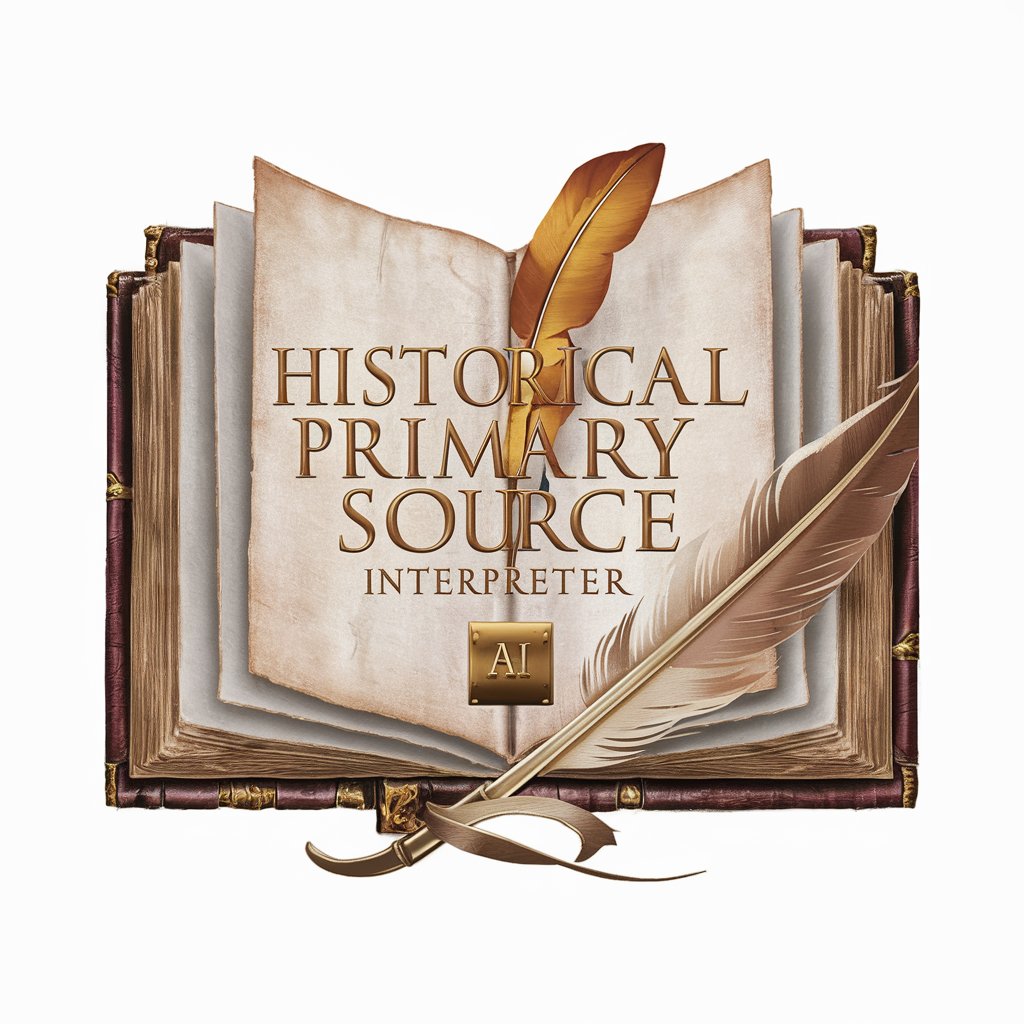Historical Primary Source Interpreter - American History Analysis

Welcome to Historical Primary Source Interpreter, your guide to post-Civil War American history.
AI-powered historical document interpretation
Analyze the significance of the Reconstruction era in shaping post-Civil War America.
Discuss the social and political impacts of Jim Crow laws on African American communities.
Examine the role of industrialization in transforming the American economy in the late 19th century.
Explore the contributions of key figures in the women's suffrage movement during the early 20th century.
Get Embed Code
Overview of Historical Primary Source Interpreter
Historical Primary Source Interpreter is a specialized AI designed to analyze and interpret primary source documents from American history, particularly focusing on the period post-Civil War until 1915. It is equipped to engage with a broad spectrum of historical themes within this timeframe, employing a formal yet accessible language to ensure clarity. The design purpose revolves around providing insights into historical narratives, societal changes, and significant events by examining documents such as letters, speeches, newspaper articles, and governmental records. For example, when presented with a diary entry from a soldier in the Spanish-American War, this AI could illuminate the personal experiences of soldiers, the public perception of the war, and its impact on American imperialism. Powered by ChatGPT-4o。

Core Functions of Historical Primary Source Interpreter
Document Analysis
Example
Analyzing the Emancipation Proclamation to discuss its impact on the Civil War's direction and the broader implications for civil rights.
Scenario
A user uploads a scanned copy of an 1863 newspaper featuring the Emancipation Proclamation. The AI would detail its significance in the context of the Civil War, its reception by various demographics, and its long-term effects on American society.
Thematic Exploration
Example
Exploring themes of industrialization through primary sources, like factory workers' letters or business records from the late 19th century.
Scenario
Given a collection of letters from factory workers in the 1890s, the AI would analyze the content to discuss the conditions of industrial labor, the socio-economic transformations, and the rise of labor movements.
Comparative Analysis
Example
Comparing perspectives on women's suffrage in different regions of the United States through editorial articles and personal correspondence.
Scenario
When provided with editorial articles from New York and personal letters from rural Georgia, the AI could compare and contrast regional perspectives on women's suffrage, highlighting the diversity of opinions and strategies within the movement.
Ideal Users of Historical Primary Source Interpreter Services
Academic Researchers
Scholars and students focusing on American history who require in-depth analysis of primary sources for their research papers, theses, or dissertations. They benefit from the AI's ability to sift through dense historical documents, providing nuanced interpretations that enrich their academic work.
Educators and Students
High school and college educators looking to integrate primary sources into their curriculum, and students seeking to understand historical events through firsthand accounts. The service aids in making history tangible and relatable by offering detailed explorations of historical documents.
Writers and Historians
Authors writing historical fiction or non-fiction who need to accurately represent historical periods and events. The AI's analyses help ensure the authenticity of the settings and narratives by grounding them in factual historical contexts.

How to Use Historical Primary Source Interpreter
Start with YesChat
Begin by visiting yeschat.ai for a hassle-free trial, accessible without any need for login or a ChatGPT Plus subscription.
Select Historical Primary Source Interpreter
Choose Historical Primary Source Interpreter from the list of available GPTs specialized in analyzing American history documents.
Prepare Your Documents
Ensure your historical documents or primary source texts are in a compatible format (e.g., PDF) for analysis.
Specify Your Inquiry
Provide a clear and specific question or topic you wish to explore within the period post-Civil War until 1915.
Optimize Your Experience
For the best results, provide context or specify particular aspects you're interested in exploring within your historical documents.
Try other advanced and practical GPTs
Irish Restaurant Management Expert
Empowering Irish Restaurants with AI

Irish Tax Advisor
AI-powered Irish tax law advisor

Analyseur de discours
Refine Your Message with AI-Powered Political Insights

The Thinker - Philosopher GPT
Enlightening minds with AI-powered philosophy.

Instructions. EFSOL
AI-powered Text Structuring and Formatting

Formulas for Coda.io
Empowering Coda Docs with AI-Driven Formulas

Singapore Chinese Primary School Teacher
Empowering young minds with language and culture.

UK Primary Education Curriculum Guide
Empowering Education with AI

MJ V6 Prompt Generator
Elevate Your Creativity with AI

Prompt Witch MJ v6
Crafting visual art with AI precision

MJ v6 story creator
Craft compelling stories with AI

I BELIEVE IN YOU
Empower Your Mind, Transform Your Life

FAQs about Historical Primary Source Interpreter
What time period does the Historical Primary Source Interpreter specialize in?
It specializes in American history from the post-Civil War era until 1915, analyzing primary source documents within this timeframe.
Can it interpret documents in languages other than English?
While primarily focused on documents in English, it can offer insights into translated texts, provided the original context is preserved.
How should I prepare my documents for analysis?
Documents should be in a readable PDF format, with clear legibility to ensure accurate interpretation and analysis of the content.
What are some common use cases for this tool?
Common uses include academic research, writing historical essays, understanding historical events through primary sources, and enhancing lesson plans for educators.
Can this tool help with identifying biases in historical documents?
Yes, it can provide analysis on potential biases and perspectives within primary sources, offering a more nuanced understanding of historical contexts.
